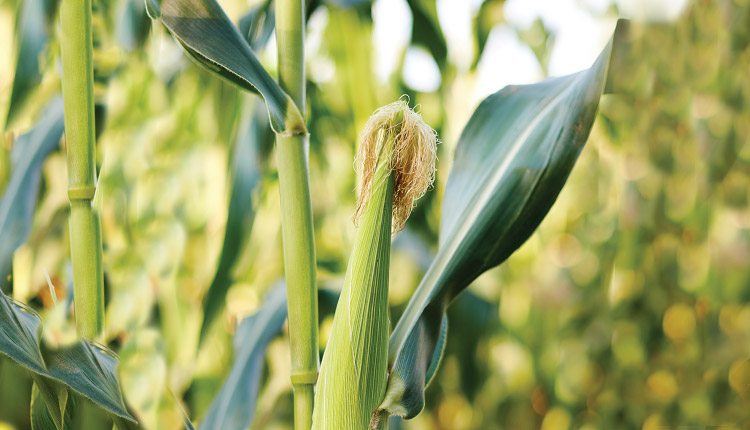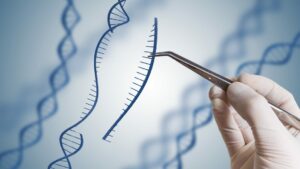Explore the long history of GMO technology.
To date, scientists have engineered bacteria that produce medication-grade drugs, crops with built-in pesticides and beagles that glow in the dark. While these are all relatively recent advances in scientific technology, humans have been altering the genetics of organisms for thousands of years. How did the original practice of selective breeding evolve into the concept of genetically modified organisms, as we know it today? Innovators, motivated by some of the world’s most critical problems, have paved the way for GMOs — a path that leads to an unimaginable array of benefits, but also raises extremely important questions.
The concept of “genetically modified organisms,” or GMOs, has received a large amount of attention in recent years. Indeed, the relative number of Google searches for “GMO” has more than tripled since late 2012. However, humans have been genetically modifying organisms for over 30,000 years! Clearly, our ancestors had no scientific laboratories capable of directly manipulating DNA that long ago, so how did they do it, and how have GMOs become such a popular topic?
Ancient Genetic Modification
While our ancestors had no concept of genetics, they were still able to influence the DNA of other organisms by a process called “selective breeding” or “artificial selection.” These terms, coined by Charles Darwin, describe the process of choosing the organisms with the most desired traits and mating them with the intention of combining and propagating these traits through their offspring. Repeated use of this practice over many generations can result in dramatic genetic changes to a species. While artificial selection is not what we typically consider GMO technology today, it is still the precursor to the modern processes and the earliest example of our species influencing genetics.
The dog is thought to be the first organism our ancestors artificially selected. About 32,000 years ago, when our ancestors were hunters and gatherers, wild wolves in East Asia joined groups of humans as scavengers. They were domesticated and then artificially selected to increase docility, leading to dogs that are closely related to what are known as Chinese native dogs. Over millennia, various traits such as size, hair length, color and body shape were artificially selected for, altering the genetics of these domesticated descendants of wolves so much that we now have breeds such as Chihuahuas and corgis that barely resemble wolves at all. Since this time, artificial selection has been applied to many different species and has helped develop all sorts of animals from prize-winning racehorses to muscular beef cattle.
Artificial selection has also been utilized with a variety of plants. The earliest evidence of artificial selection of plants dates back to 7800 BCE in archaeological sites found in southwest Asia, where scientists have found domestic varieties of wheat. However, one of the most dramatic and prevalent alterations in plant genetics has occurred through artificial selection of corn. Corn, or maize, began as a wild grass called teosinte that had tiny ears with very few kernels. Over the hundreds of years, teosinte was selectively bred to have larger and larger ears with more and more kernels, resulting in what we now know as corn. A similar process has given us large heads of broccoli, bananas with nearly unnoticeable seeds and apples that are sweet and juicy.
Although artificial selection is an ancient process that is still used today, most current conversations regarding GMOs refer to a much more modern process of altering the genetics of organisms.
The Birth of Modern Genetic Modification
A breakthrough came in 1973, when Herbert Boyer and Stanley Cohen engineered the first genetically engineered (GE) organism. The two scientists developed a method to very specifically cut out a gene from one organism and paste it into another. Using this method, they transferred a gene that encodes antibiotic resistance from one strain of bacteria into another, bestowing antibiotic resistance upon the recipient. One year later, Rudolf Jaenisch and Beatrice Mintz used a similar procedure in animals, introducing foreign DNA into mouse embryos.
Although this new technology opened up countless avenues of research possibilities, immediately after its development, the media, government officials and scientists began to worry about the potential ramifications on human health and Earth’s ecosystems. By the middle of 1974, a moratorium on GE projects was universally observed, allowing time for experts to come together and consider the next steps during what has come to be known as the Asilomar Conference of 1975.
At the conference, scientists, lawyers, and government officials debated the safety of GE experiments for three days. The attendees eventually concluded that the GE projects should be allowed to continue with certain guidelines in place.
For instance, the conference defined safety and containment regulations to mitigate the risks of each experiment. Additionally, they charged the principal investigator of each lab with ensuring adequate safety for their researchers, as well as with educating the scientific community about important developments. Finally, the established guidelines were expected to be fluid, influenced by further knowledge as the scientific community advanced.
Due to the unprecedented transparency and cooperation at the Asilomar Conference, government bodies around the world supported the move to continue with GE research, thus launching a new era of modern genetic modification.
Use of Genetically Engineered Organisms
In 1980, the U.S. Supreme Court ruled that scientists from General Electric could patent bacteria that were genetically engineered to break down crude oil to help with oil spill mitigation. This ruling legally permitted ownership rights over GMOs, giving large companies the incentive to rapidly develop GMO tools that could both be useful and profitable.
Two years later, in 1982, the U.S. Food and Drug Administration approved the first human medication produced by a genetically modified organism. Bacteria had been genetically engineered to synthesize human insulin, allowing them to produce enough of the hormone to purify, package and prescribe it to diabetes patients as the drug Humulin.
While uses for genetic engineering range from oil spills to medication, perhaps the most controversial application is for food production. The first field experiments of food crops that had been genetically modified using recombinant DNA technology began in 1987. After five years of extensive health and environmental testing, Calgene’s Flavr Savr tomato became the first food crop to be approved for commercial production by the U.S. Department of Agriculture. These tomatoes were modified to include a DNA sequence that inhibited production of a natural tomato protein, increasing the firmness and extending the shelf life of the Flavr Savr variety.
In addition to making food more aesthetically pleasing, scientists have developed crops that are easier for farmers to cultivate. In 1995 the first pesticide-producing crop was approved by the U.S. Environmental Protection Agency after rigorous testing. A year later, Bt corn was approved, and now the majority of corn in the United States has the Bt toxin gene. Crops have also been genetically engineered to resist herbicides, making it easier for farmers to control unwanted plants in their fields. Perhaps the most famous herbicide resistant crops are the Roundup Ready, or glyphosate-resistant, plants. The first of these glyphosate-resistant crops was a variety of soybean, engineered by Monsanto in 1996. Now glyphosate-resistant technology has been applied to other crops, including corn and sugar beets.
Scientists have also genetically engineered crops to increase nutritional value. For instance, Golden Rice was developed in 2000 with the goal to combat vitamin A deficiency, which is estimated to kill over 500,000 people every year.
Although many species of animals have been genetically engineered, the vast majority of this technology is used for research purposes, and to date, no GE animals are on supermarket shelves. That could soon change with the FDA’s recent approval of a GE salmon, called AquaAdvantage, which grows to marketable size in half the time as conventional farmed salmon. Also, in 2009, the U.S. FDA approved the first biological product produced by a GE animal, ATryn, a drug used to treat a rare blood clotting disorder.
Genetically Engineered Food Controversies
There have been many controversies regarding GE technology, with the majority relating to GE food. While some critics object to the use of this technology based on religious or philosophical bases, most critics object on the basis of environmental or health concerns.
For instance, a 1999 publication showed Bt toxin had negative effects on butterfly populations in laboratory tests, which lead to strong objections of Bt use. However, follow-up studies in actual farm fields confirmed the safety of this technology.
In a different example, the economic stress of the poor yield of GE cotton crops in India during the late 1990s and early 2000s was associated by many organizations with a presumed increase in farmer suicides. However, it was later concluded that suicide rates were actually unchanged after the introduction of GE cotton, and that there were economic benefits of GE cotton for most Indian farmers.
During the same time frame, public awareness of the existence of GE foods increased, and calls for regulation of GE food grew louder, resulting in labeling requirements for GE food in many countries.
Today, 64 countries have mandatory labeling laws for GE food. However, the United States still does not have a mandatory, nationwide labeling law, although many advocacy groups are lobbying to enact one. These groups argue that labeling GE food is important for consumer choice and for monitoring unforeseen problems associated with the technology. In contrast, groups opposing labels claim a law would unnecessarily eliminate consumer demand for current GE crops, causing steep increases in food price and resource utilization.
Although the debate about GE food is active, and there is no shortage of opponents to the technology, the scientific community has largely come together and concluded consumption of GE food is no more dangerous than eating traditionally selected crops. This conclusion has not stopped businesses from capitalizing on the current fear of GE food.
In 2013, Chipotle became the first restaurant chain to label menu items as “GMO,” and in April of this year, the company announced the elimination of all ingredients made with GMOs, citing their “food with integrity journey.” With cases such as this, it is safe to say the debate on GE food will continue for some time.
The Future of GMO Technology
There are countless potential uses of GE technology in development. These include plants with superior disease and drought resistance, animals with enhanced growth properties, and strategies for more efficient pharmaceutical production. Likewise, GE technology itself is quickly advancing.
Recently, researchers have developed a new technology called CRISPR, which takes advantage of bacterial systems to simplify genetic editing, allowing for easier development of GE organisms. This technology could be used to expedite development of useful GE crops, facilitate disease elimination or even alter entire ecosystems. Recent advances in plant breeding techniques may increase the utility and rebound the popularity of the more traditional GMO method of selective breeding. Indeed, new drought resistant strains of various crops have been recently developed using traditional breeding methods.
The United Nations predicts that by 2050, humans will need to produce 70 percent more food than we currently do in order to adequately feed the global population. Indeed, innovative approaches will be required to solve this problem, and genetically engineering our food is a potentially useful tool. As scientists look forward at ways to create better crop survival, yield and nutrition, it is important that we remember where all of this work began, and give credit to the pioneers who have made our advancements possible.
Our ancestors that selectively bred wolves to eventually develop Corgis could not foresee that today we would be able to genetically engineer corn to withstand pests, herbicides and drought. What is the future of GMO technology that we ourselves can’t foresee now?
Note: This article was originally published on the Science in the News Boston Blog.
















